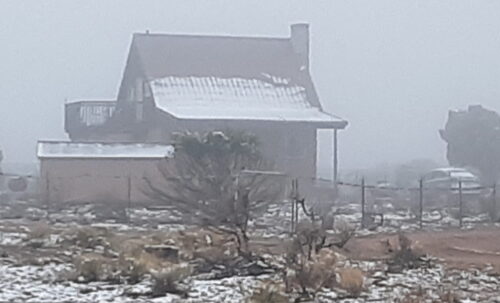
In a previous post, I discussed the unsustainable way I had been living my life. Not only was I an environmental scientist unable to practice what I preached, but the financial, physical, and mental strain of that lifestyle was tearing me apart.
So my dad and I started a homestead. He left for the winter with the intention of coming back in Spring of 2020, but the pandemic delayed his return till this summer (summer 2021). In the meantime, my neighbor K and I have consolidated our homesteads into one.
K constructed a stick-built house (traditional foundation, framing, drywall, etc), with 2” x 6” walls and 2” x 8” ceiling, improving on the existing but dilapidated structure and providing considerable insulation. K is planning to repaint the outside with high-tech thermal paint insulation, equivalent to around 6 inches of traditional insulation. He also built a sunroom on the south-side of the house, which brings in a lot of solar heat during the day, very useful in the winter.
Our solar panels provide us with electricity. His system is a 1200 watt system, with a 12 kw battery bank. With that we’re able to pump water, run a fridge, do laundry, work on a laptop, and even watch TV. For those thinking along these lines, you can use them during the day, but if you want your batteries to last for a long time (5+ years) be careful about how much you discharge them at night. If you do not do this, your batteries will die within 2 years–a loss of several grand. You can wait to do your laundry and pump water till the daytime. This gives you a legitimate excuse to rest in the evening!
The house has a metal roof with gutters directed into one cistern under the house for collecting rainwater. For the past two decades, this was sufficient to provide K with water year-round. But now, because of increasing drought, we have to supplement this rainwater with paid-for and hauled water. This unexpected need and cost of hauling additional water was a big disappointment. These types of climate-related changes will impact how you will be able to design your own sustainable living.
We have a wood stove and propane for heating and cooking. We have a smaller wood stove, which consistently provides about 20,000 BTUs, perfect for maintaining a comfortable temperature in the small home. We also use a chainsaw with a 40 Volt lithium ion battery for harvesting dead wood. It starts at the push of a button and takes little maintenance between uses.
Be prepared for setbacks and don’t get discouraged–this is a life-long process.
Next blog post: Benefits of having a sustainable home
